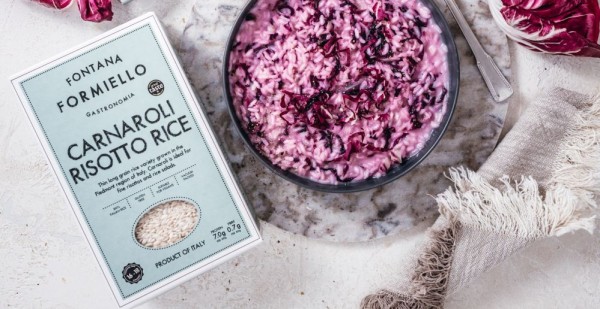LET'S TALK BALSAMIC

Aged by time, rooted in tradition
Smooth, rich, and layered with history, balsamic vinegar is one of Italy’s most iconic culinary treasures. Born in Modena, in the northern region of Emilia-Romagna, this glossy condiment strikes a perfect balance of sweetness and acidity. Whether whisked into a vinaigrette or drizzled over grilled vegetables, it brings elegance and depth to everyday cooking.
From the heart of Emilia-Romagna
Balsamic vinegar begins with grapes grown in the rolling hills around Modena and Reggio Emilia. This region’s unique climate - hot summers and cold winters - supports the slow fermentation and aging process that gives balsamic its complexity. Grapes like Trebbiano and Lambrusco are harvested in autumn and transformed into concentrated grape must, the base of true balsamic vinegar.
A history poured drop by drop
For centuries, balsamic vinegar was a closely guarded family tradition - prepared in attic spaces, matured in wooden barrels, and passed down through generations. Once gifted to royalty and prized as a curative elixir, it has become a lasting symbol of Italian culinary heritage. The traditional process begins with slowly cooked grape must, which is then transferred through a sequence of barrels made from different woods - oak, chestnut, cherry, and juniper - each contributing its own subtle aroma. This meticulous aging process gave rise to what we now know as Balsamic Vinegar of Modena.
The four faces of balsamic
Not all balsamic vinegars are created equal. Here’s how to tell the difference
- Traditional BalsamicVinegar of Modena DOP: The most prized and protected form, made from 100% cooked grape must and aged for at least 12 years - sometimes up to 25 - in a series of wooden barrels. Bottled in 100ml consortium-approved bottles, it’s intensely concentrated, with a syrupy texture and deep, complex flavour. Used sparingly, it elevates even a shaving of Parmigiano Reggiano or a few ripe strawberries. Always marked with the DOP (Denominazione di Origine Protetta) label.
- Balsamic Vinegar of Modena IGP:This balsamic vinegar blends wine vinegar with concentrated grape must and is aged in wood for at least 60 days. The best examples contain more grape must, which naturally gives them a darker colour, fuller body, and richer flavour - without added colouring. Certified IGP (Indicazione Geografica Protetta), it reflects authentic regional production.
- Commercial Balsamic Vinegar:Mass-produced, often with added caramel, glucose syrup, or thickeners to mimic aged vinegar. Inexpensive, but lacking in depth and authenticity.
- Balsamic Glaze: A reduced balsamic sauce, sometimes sweetened or thickened. While many are artificially enhanced, a quality glaze retains the natural flavour of real balsamic and is perfect for drizzling over savoury or sweet dishes.
How to recognise quality
- Look for sDOP or IGP certification
- Choose vinegars with grape must listed before wine vinegar
- Avoid caramel, added sugar, or syrups-starch is only acceptable in glazes, never in balsamic vinegar.
- Fewer ingredients = better quality
The Fontana Formiello difference
At Fontana Formiello, we offer two balsamic products - both crafted using only essential ingredients and traditional methods.
Balsamic Vinegar of Modena IGP: Made with just concentrated grape must and wine vinegar:
- Certified IGP
- Naturally matured in wooden barrels
- Free from caramel, added sugars, starches, and preservatives
- Available in organic and non-organic versions
With a higher density than standard IGP balsamic vinegars - reaching up to 1.18 g/ml - ours offers a richer flavour, natural sweetness, and elegant body, ideal for dressing salads, marinating vegetables, or finishing cheese and meats.
Glaze with Balsamic Vinegar of Modena IGP: Our glaze respects the flavour of its source:
- Made with concentrated grape must and Balsamic Vinegar of Modena IGP
- Thickened with just a touch of modified starch
- No added sugar, caramel colouring, or artificial additives.
Unlike many glazes that use added sweeteners, and colouring to mimic quality, Fontana Formiello’s glaze delivers the authentic sweet-tangy flavour of real balsamic, naturally enhanced by its rich ingredients. Balanced, versatile, and free from unnecessary additives, it honours tradition and elevates everything from vegetables and grilled meats to cheese and desserts.
A bottle of Italian tradition
From the heart of Emilia Romagna to your kitchen shelf, ballsamic vinegar carries the essence of craftsmanship, provenance, and care. Whether used as a finishing touch or an everyday staple, it connects you to the sould of Italian cooking.
Fontana Formiello continues the legacy of the Coppola family, who have been preserving Italian food traditions since 1903. In the hands of the fourth generation, the family believes that care patience, and provenance are what make good food truly exceptional.

